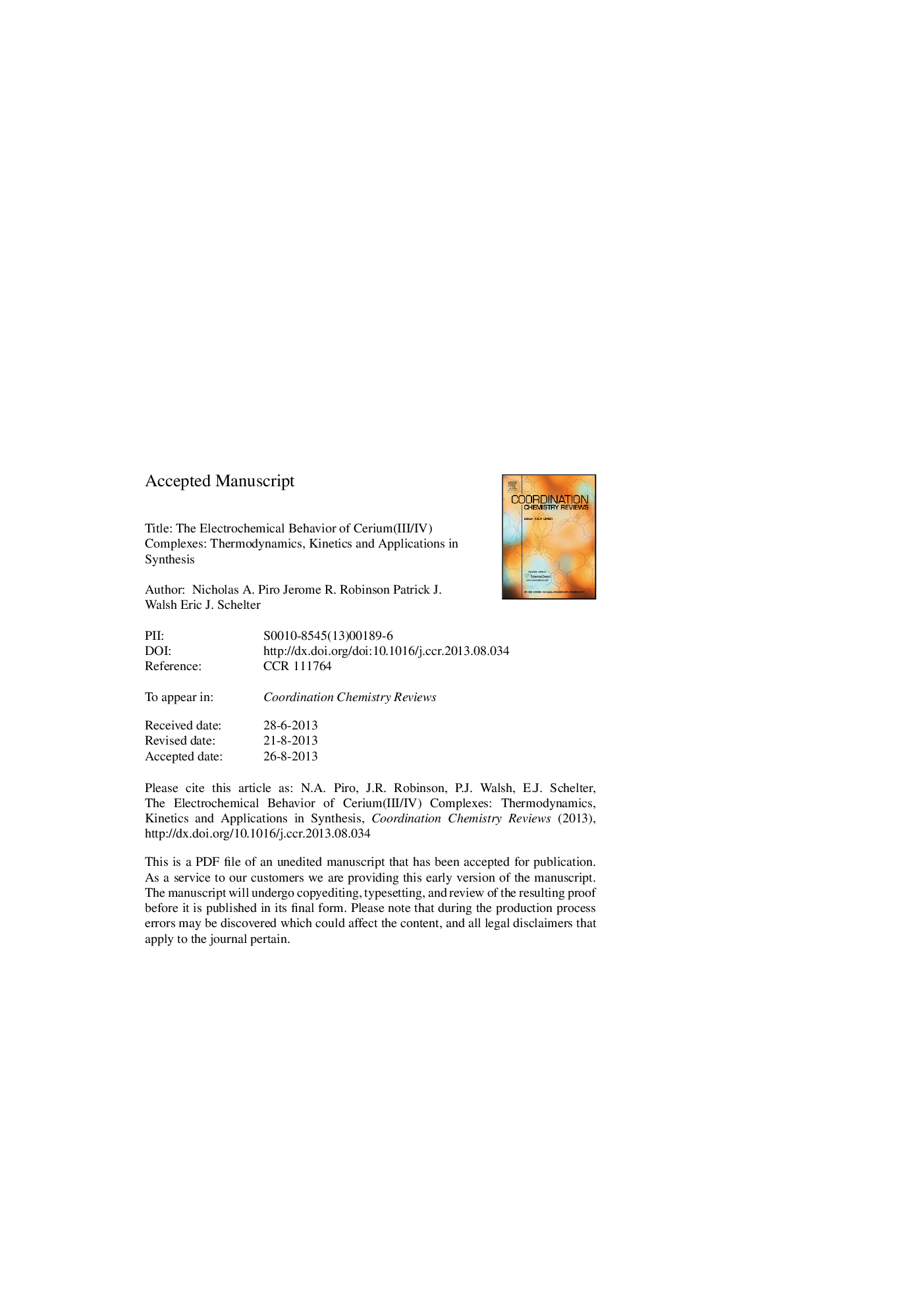| Article ID | Journal | Published Year | Pages | File Type |
|---|---|---|---|---|
| 7748138 | Coordination Chemistry Reviews | 2014 | 51 Pages |
Abstract
- The potential of the cerium(III/IV) redox couple spans >3Â V and is highly sensitive to its ligand environment.
- Ligand properties that stabilize high oxidation-state cerium are different than for transition metals.
- Redox transformations can be used synthetically to access cerium(IV) compounds.
- Sluggish electron transfer kinetics plays a major role in the electrochemistry of cerium complexes.
Keywords
CyclopentadienylPOMMBPNTADAPtert-butylIRRNBSAcAcHBPNHETTPTCLPDTPAIPRN-bromosuccinimideOEPCMPOTetrapyridylporphyrinHOPOPolyoxometallateTPyPTetrabutylammonium tetrafluoroborateTBPPTBAPF6TBAPTPPEPASCEDPAXANESEPCTHFRare earthDMSOTetraphenylporphyrinSalenethylEDTAEthylenediaminetetraacetic acidacetylacetonateDipicolinic acidnitrilotriacetic acidnormal hydrogen electrodeSaturated Calomel ElectrodeElectrochemistryelectron transferOctaethylporphyrinOxidationIso-propylbenzoquinoneBINOLbutylTetrahydrofuranTris(2-aminoethyl)amineX-ray absorption near-edge structureDiethylenetriaminepentaacetic acidDimethylsulfoxideSalophenCeriumTAPIrreversiblePhthalocyanineferroceneTRENLanthanidesIbuIonic liquidMethylCANNaphthalocyanineCeric Ammonium NitrateHydroxypyridinone
Related Topics
Physical Sciences and Engineering
Chemistry
Inorganic Chemistry
Authors
Nicholas A. Piro, Jerome R. Robinson, Patrick J. Walsh, Eric J. Schelter,
